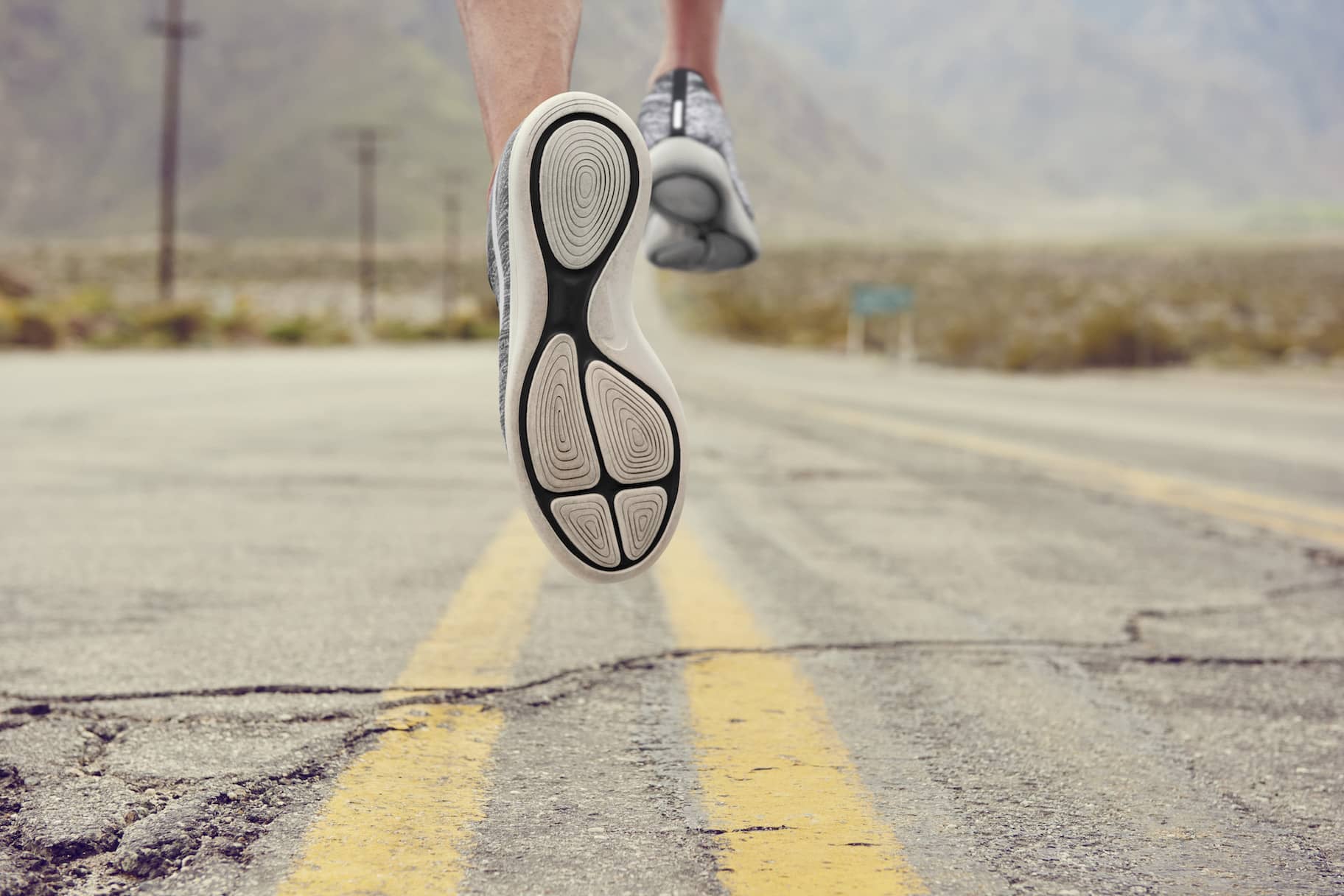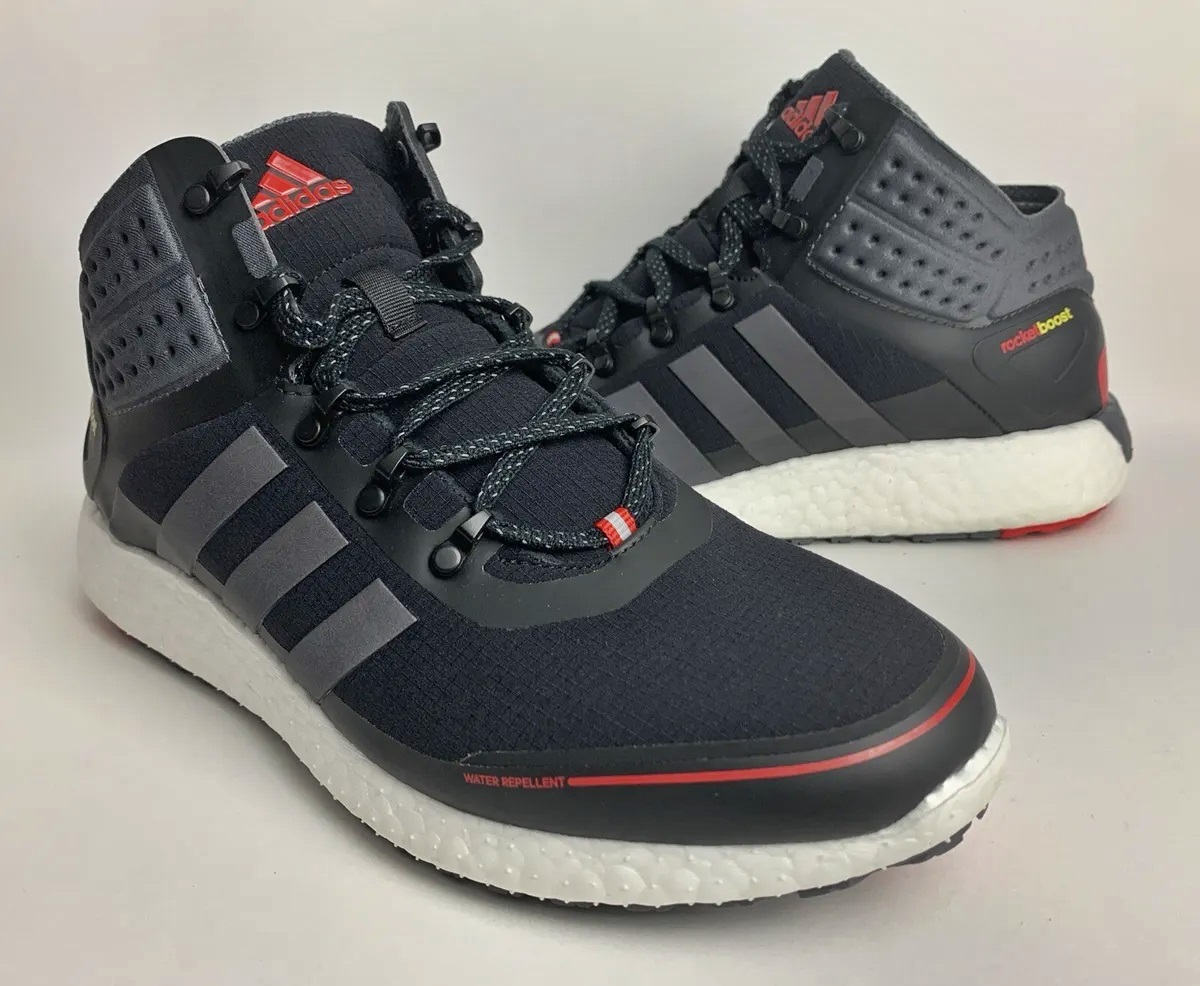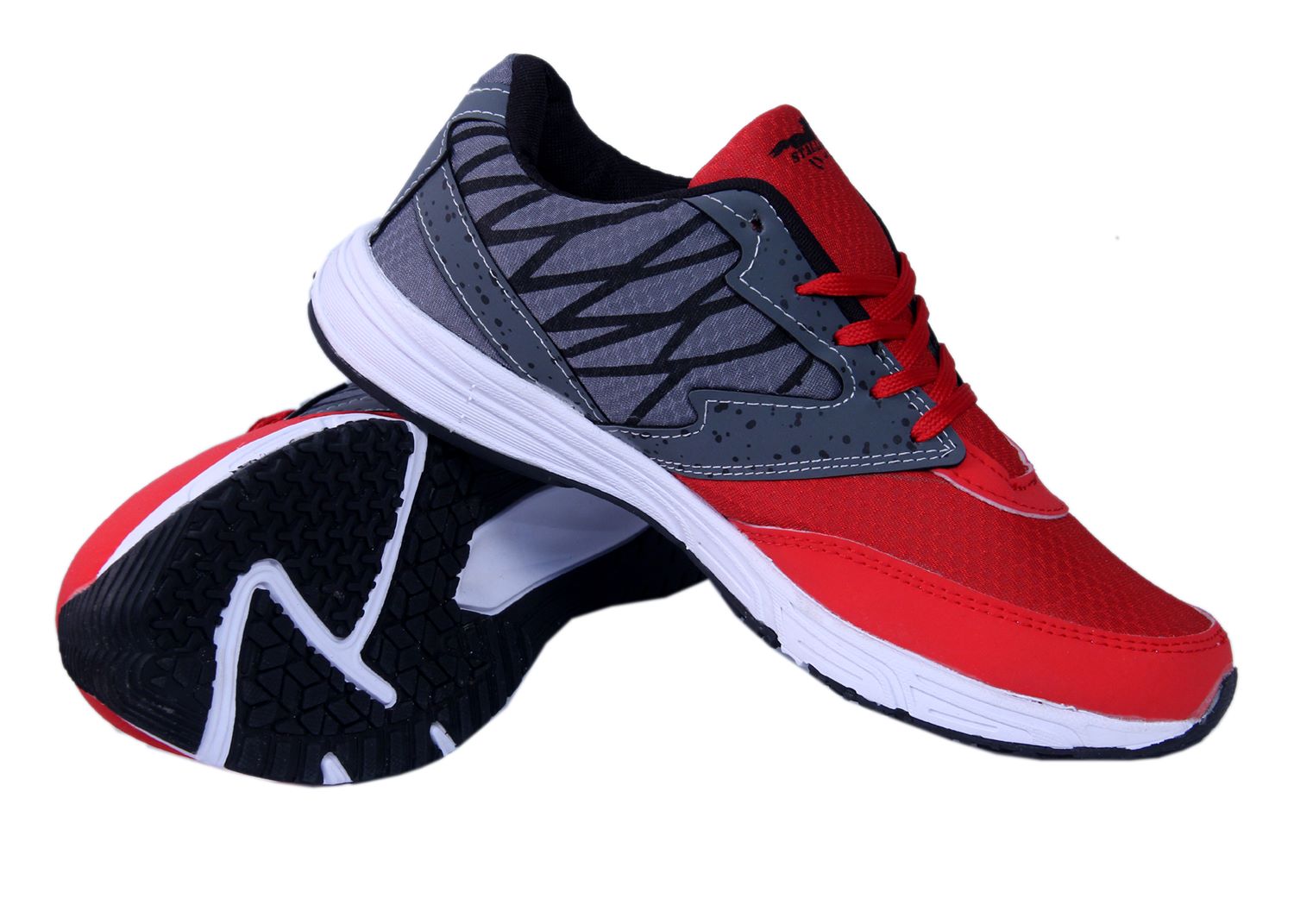

Featured
How Long Should I Use My Running Shoes
Modified: January 2, 2024
Find out the optimal lifespan for your running shoes with our featured guide. Discover how long you should use your trainers to prevent injury and maintain performance.
Introduction
One of the most crucial decisions for runners is determining how long to use their running shoes before replacing them. It’s a question that even seasoned athletes struggle with. The lifespan of your running shoes depends on various factors such as your running style, body weight, and the type of terrain you run on.
Running shoes are built to absorb impact, provide stability, and support your feet while running, but they wear out over time. Using worn-out shoes can lead to discomfort, pain, and even increase the risk of injury. Therefore, it’s essential to know when it’s time to bid farewell to your trusty pair of running shoes and invest in a new one.
In this article, we’ll explore the factors to consider when determining the lifespan of your running shoes and provide some general guidelines to help you make an informed decision. Remember that these are just recommendations, and ultimately you should listen to your body and make decisions based on your own experience and comfort.
Factors to Consider
When deciding how long to use your running shoes, there are several factors you should consider:
- Mileage: The number of miles you’ve run in your shoes is a crucial factor in determining their lifespan. Most running shoes have a recommended mileage range provided by the manufacturer. If you exceed this range, it’s a clear sign that you need to replace your shoes. However, keep in mind that this range can vary depending on factors like shoe quality, your running style, and body weight.
- Signs of Wear and Tear: Inspect your shoes regularly for signs of wear and tear. Look for visible signs of damage such as worn-out outsoles, frayed laces, or torn cushioning. If you notice significant wear, it’s a good indication that your shoes are nearing the end of their lifespan.
- Cushioning and Support: Over time, the cushioning and support in your running shoes start to break down, diminishing their effectiveness. Pay attention to how your shoes feel during your runs. If you begin to notice a lack of cushioning or feel less support, it may be time to replace them.
- Your Running Style: Your running style can affect how quickly your shoes wear out. If you have a heavy foot strike or tend to overpronate or supinate, your shoes may wear out faster than someone with a lighter foot strike or neutral gait. Consider your running mechanics and be mindful of any changes in shoe performance.
- Listening to Your Body: Your body is an excellent indicator of when it’s time to retire your running shoes. Pay attention to any discomfort, pain, or new aches that you may experience during or after your runs. If you notice unusual fatigue or joint discomfort that wasn’t present before, it could be a sign that your shoes are no longer providing adequate support.
By considering these factors, you can have a better understanding of when it’s time to replace your running shoes. Remember, it’s always better to err on the side of caution and invest in a new pair rather than risk running in worn-out shoes that could potentially lead to injury.
Mileage Guidelines
Mileage guidelines can provide a helpful reference point when determining how long to use your running shoes. While the exact mileage at which to replace your shoes can vary depending on factors like shoe quality and your running style, here are some general guidelines:
- 300-500 miles: This is a common range recommended by many experts. For most runners, shoes will start to show signs of significant wear and may no longer provide adequate support and cushioning after reaching this mileage. However, some high-quality shoes may last up to 500 miles.
- 6-12 months: If you don’t track your mileage, a good rule of thumb is to replace your running shoes every 6-12 months, depending on how frequently you run. Even if your shoes haven’t reached the recommended mileage limit, the materials may start to degrade over time, leading to diminished performance and increased risk of injury.
- Weight and Running Style: Runners with a higher body weight or those who have a heavier foot strike may need to replace their shoes more frequently. The increased impact and pressure can cause shoes to wear out faster. Additionally, runners with overpronation or supination may also need to replace their shoes more often due to the added stress on certain areas of the shoe.
It’s important to note that these mileage guidelines are just general recommendations. Every runner is different, and factors such as shoe quality, running surface, and individual biomechanics can play a significant role in shoe lifespan. Pay attention to the condition of your shoes and how they feel during your runs to make the best decision regarding their replacement.
Signs of Wear and Tear
Regularly inspecting your running shoes for signs of wear and tear is crucial to determine if they need to be replaced. Here are some common signs to look out for:
- Outsole Wear: Examine the outsole of your shoes. If you notice significant wear patterns, such as uneven tread or smooth spots, it’s a clear indication that the shoes have worn out. A worn-out outsole means reduced traction, which can affect your stability and increase the risk of slipping.
- Midsole Compression: The midsole of your running shoes is responsible for providing cushioning and shock absorption. Over time, the midsole can compress, resulting in a loss of cushioning and support. If you notice excessive flattening or a lack of responsiveness in the midsole, it’s a sign that the shoes have reached the end of their lifespan.
- Visible Damage: Check for any visible signs of damage, such as frayed stitching, torn mesh, or holes in the upper. Damage to the upper can compromise the shoe’s structural integrity and lead to discomfort or even injury. If you notice any visible damage that cannot be repaired, it’s time to consider replacing your shoes.
- Decreased Comfort: As shoes age, they may become less comfortable due to wear and material breakdown. If you start experiencing discomfort or pain during your runs that you didn’t experience before, it may be a sign that your shoes are no longer providing sufficient cushioning or support.
- Limited Flexibility: Flexibility is important in running shoes as it allows for natural movement of your feet. Over time, shoes can lose their flexibility, becoming stiff and rigid. If you notice a lack of flexibility in the sole or upper of your shoes, it’s an indication that they may have become too worn out to provide optimal performance.
Remember, regular visual inspections and paying attention to how your shoes feel during your runs are essential to catch signs of wear and tear. If you notice any of these signs, it’s a good indication that it’s time to retire your current pair and invest in a new set of running shoes.
Cushioning and Support
The cushioning and support provided by your running shoes are critical for injury prevention and optimal performance. As shoes age, the cushioning begins to break down, and the support may diminish. Here are some indicators that it’s time to replace your shoes due to cushioning and support issues:
- Loss of Bounce: When you first start using a new pair of running shoes, you’ll notice a springy feeling in the cushioning, providing a responsive and comfortable experience. Over time, the cushioning can become compressed, resulting in a loss of bounce and a less cushioned feel. If you feel like your shoes aren’t absorbing impact as effectively as they used to, it’s a sign that the cushioning has worn out.
- Feeling Unstable: Running shoes are designed to provide stability and support to your feet. As shoes age, the support structures can weaken or break down, leading to a feeling of instability during your runs. If you notice that your shoes no longer provide the same level of stability and support, it’s time to consider replacing them to reduce the risk of injuries like ankle sprains or shin splints.
- Increased Fatigue: Worn-out running shoes can cause increased fatigue and muscle soreness. When the cushioning and support are compromised, your muscles have to work harder to absorb shock and maintain proper alignment. If you find yourself feeling more fatigued, experiencing more discomfort, or experiencing muscle soreness that you didn’t have before, it may be a sign that your shoes are no longer providing adequate cushioning and support.
- Repeated Injuries: If you’re experiencing recurring or new injuries, it may be due to the lack of cushioning and support in your running shoes. Worn-out shoes can increase the stress on your joints, muscles, and tendons, leading to overuse injuries. If you’ve ruled out other potential causes for your recurring injuries, it’s worth considering whether your shoes need to be replaced.
It’s important to pay attention to how your shoes feel during and after your runs. If you notice any of these signs indicating a decline in cushioning and support, it’s time to retire your current pair and invest in new running shoes to maintain optimal comfort and reduce the risk of injury.
Your Running Style
Your running style plays a significant role in the wear and tear of your running shoes. The way you run can impact how quickly your shoes deteriorate and when they need to be replaced. Here are a few factors to consider:
- Foot Strike: The way your foot strikes the ground during running can affect the longevity of your shoes. If you have a heavy foot strike or tend to land with excessive force, it can accelerate the breakdown of cushioning and support. Shoes with a higher cushioning level may be more suitable for runners with a heavier foot strike to prolong their lifespan.
- Overpronation or Supination: If you overpronate (your foot rolls inward excessively) or supinate (your foot rolls outward excessively), it can put additional stress on certain areas of your running shoes. These repetitive movements can cause the shoe’s cushioning and support structures to wear out faster. Choosing shoes with stability features can help slow down the wear and tear caused by overpronation or supination.
- Stride Length and Foot Flexibility: The length of your stride and the natural flexibility of your foot can impact the rate at which your shoes wear out. If you have a longer stride or more flexible foot, it can increase the stress on the shoe’s midsole and outsole. Consider selecting shoes with durable materials in the areas that come into contact with the ground to increase longevity.
- Frequency and Distance: The frequency and distance of your runs also affect how long your running shoes last. If you’re a dedicated and consistent runner who logs many miles per week, your shoes may wear out quicker compared to someone who runs infrequently. Be mindful of your running habits and the volume of miles you put on your shoes to determine when it’s time for a replacement.
Understanding your running style and how it impacts your shoes can help you make better decisions about when to replace them. It’s important to choose shoes that cater to your specific needs, whether it’s for stability, cushioning, or durability.
Additionally, consider getting a professional gait analysis done at a specialty running store. They can assess your running form and biomechanics to recommend footwear that can better support your running style and potentially extend the life of your shoes.
Listening to Your Body
While guidelines and recommendations can be helpful, ultimately, your body knows best when it comes to determining if your running shoes need to be replaced. Here are a few ways to listen to your body:
- Discomfort or Pain: The most obvious indication that it’s time to replace your running shoes is if you start experiencing discomfort or pain during or after your runs. Pay attention to any new aches, soreness, or discomfort that you didn’t have before. This could be a sign that your shoes are no longer providing the necessary support or cushioning.
- Unusual Fatigue: If you find that you’re experiencing more fatigue and feeling worn out more quickly during your runs, it could be a sign that your shoes are no longer providing the energy return and support your body needs. This increased effort could be attributed to worn-out cushioning or a decrease in stability.
- Changes in Performance: If you notice a decline in your running performance, such as slower times or decreased agility, it may be time to evaluate your shoes. Worn-out shoes can affect your gait and balance, impacting your overall performance. Pay attention to any changes in how your shoes feel and how they affect your running efficiency.
- Feeling Unstable: Your shoes should provide stability and a sense of security while running. If you start feeling unstable or unsteady during your runs, it could be a sign that your shoes have lost their structural integrity. This can put you at a higher risk of injuries, and it’s a clear indication that it’s time to replace your shoes.
- Trust Your Instincts: Sometimes, it’s as simple as trusting your instincts. If you have a gut feeling that your shoes have seen better days and are no longer providing the support and comfort you need, it’s worth considering replacing them. Your intuition and awareness of how your body feels are valuable tools in making the decision.
Your body is excellent at giving you signals and feedback, so it’s important to pay attention to these cues. If you notice any of these signs or if something feels off during your runs, don’t ignore it. Take the time to evaluate your shoes and consider getting a new pair if necessary.
Remember, it’s better to be proactive and replace your running shoes before any issues arise, as worn-out shoes can lead to discomfort, pain, and potential injuries.
Expert Recommendations
Many experts in the running and footwear industry provide valuable recommendations on when to replace your running shoes. While individual preferences and running styles can vary, these expert guidelines can serve as a helpful reference point:
- Running Shoe Manufacturers: Most running shoe manufacturers provide a recommended mileage range for their shoes. This range usually falls between 300-500 miles, but it’s important to check the specific recommendations provided by the brand of your shoes. Remember that these ranges can vary, so it’s essential to consider other factors as well.
- Running Coaches and Trainers: Running coaches and trainers often have valuable insights into shoe longevity based on their experience and expertise. They can assess your running form, provide gait analysis, and offer personalized recommendations on when to replace your shoes. Seek guidance from professionals who can give you personalized advice based on your unique running style and needs.
- Sports Podiatrists: Sports podiatrists specialize in foot and lower limb conditions related to sports and exercise. They can conduct thorough assessments, including evaluating your shoes, and provide recommendations based on your foot biomechanics and any specific foot-related issues you may have. Consulting with a podiatrist can offer valuable insights into when to replace your shoes.
- Running Community: Engaging with fellow runners and online running communities can provide a wealth of knowledge and experiences. Participate in discussions, forums, and social media groups where runners share their insights on shoe longevity. Keep in mind that everyone’s experiences can differ, so use these community recommendations as a reference alongside other factors.
It’s important to note that while expert recommendations are a valuable resource, listening to your body and paying attention to signs of wear and tear in your shoes should be your priority. Ultimately, you know your body and running habits best, and it’s essential to trust your own judgment when deciding if it’s time to replace your running shoes.
Seeking guidance from experts and other runners can provide additional perspectives and insights, but the final decision should be based on a combination of expert recommendations and your own personal experiences.
Conclusion
Knowing when to replace your running shoes is essential for maintaining comfort, preventing injuries, and optimizing your running performance. While it’s helpful to consider factors such as mileage, signs of wear and tear, cushioning and support, running style, and expert recommendations, there is no one-size-fits-all answer. Each runner is unique, and factors like body weight, running mechanics, and personal comfort play a significant role in the lifespan of your shoes.
Ultimately, the most reliable indicator is listening to your body. Pay attention to any discomfort, pain, or changes in performance during your runs. If you experience unusual fatigue, instability, or notice that your shoes no longer provide the necessary cushioning and support, it’s time to consider replacing them.
Additionally, incorporating regular shoe inspections and establishing a replacement schedule based on your running habits can help prolong the lifespan of your shoes. Taking proactive measures such as tracking mileage, inspecting for signs of wear and tear, and seeking guidance from experts can ensure that you replace your shoes at the appropriate time.
Remember, running in worn-out shoes can lead to discomfort, pain, and an increased risk of injury. It’s better to invest in a new pair of running shoes than to risk potential setbacks to your running journey.
Ultimately, finding the right time to replace your running shoes is a balance between following general guidelines, considering expert recommendations, and most importantly, listening to your own body. By being attentive and responsive to the wear and tear of your shoes, you can ensure a comfortable and injury-free running experience.








